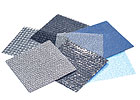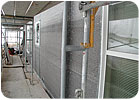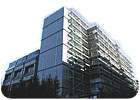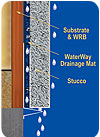
Fundamental theory in cladding integrity prevents liquid water from penetrating vertical walls, ideally through appropriate materials selection, architectural detailing and professional installation consistent with specifications and construction documents.
Unfortunately, we can all attest to the increased frequency of problems arising from water infiltration and moisture degradation in exterior assemblies.
Particularly, wood framed buildings constructed to more stringent codes appear increasingly susceptible to problems unlike older, drafty and non-insulated walls built decades ago. Avoiding deterioration in older buildings is not a consequence of better resistance to water intrusion but rather a better ability to dissipate the moisture. Forensic evaluations note compromise from water intrusion increases significantly when moisture is unable to evaporate or drain, causing accelerated consequential damages. With the absence of perfect design, execution, materials performance and continued maintenance, problems can develop.
Since more energy efficient construction may result in greater susceptibility to fungal infestation, let's consider basic requirements for mold and mildew growth:
- Spores: In wet or humid climates, mold spores are present everywhere.
- Temperatures: Generally above 40 degrees F, prevalent across the states.
- Food Source: Most organic materials including wood offer nutrients required.
- Oxygen: Readily available, even in cases of low permeance building materials.
- Water: Varies by fungal species but growth typically occurs at levels in the 20 to 40 percent range.

This was a cladding remediation project, which was demo'd back to the studs and rebuilt using the Waterway drainable stucco assembly.
Element protection
Depending on project location and climate, the moisture content of even protected building products may linger at levels just below the minimums necessary for fungal growth. Recognizing that four of the five elements triggering mold development are inherently present at all times, even a small amount of water introduced through any number of sources can result in decay, causing deterioration.So, if we agree that modern construction techniques reduce the ability to dissipate water vapor and also agree that moisture will likely penetrate exterior walls, it is very important to incorporate a defensive strategy to mitigate the affects of water intrusion and prevent rot.
An accepted concept gaining popularity in water-penetration control employs what some call multiple-element protection. Unlike face-sealed systems, this approach will incorporate an air space and/or drainage plane with joint and transition details that expel water to the building's exterior. The concept of separating exterior materials from weather resistive barriers has a favorable history in many cladding assemblies, masonry and some metal panel systems, for example. Below grade waterproofing systems also incorporate a cavity drainage configuration.

Retrofit of existing cladding (up-grade) with removal of original materials. Drainage mats were incorporated within the assembly prior to brick being installed over the entire project.
A major difference in the above grade applications is that we must also design for adequate air movement and ventilation. Unlike below grade, we are not managing gallons of water per linear foot but more likely designing for small amounts of moisture on a repetitive basis. With minor amounts of water introduced frequently, drying is equally-if not more-important than drainage. Drying occurs through air movement so the wider the cavity, the greater the airflow. Cavities less than 1/4 inch (6 mm) do not typically have adequate convection (movement of air) to remain dry, although water may still fall to the bottom.

Conversion of existing apartment complex to condos. Old stucco was removed and the structure rebuilt using Waterway mats and stucco.
Some manufacturers offer an additional layer of defense against water entrapment and the destructive affects of moisture intrusion. Building papers and housewraps are well established in providing some protection against substrate damage. Traditional barriers offer a marginal safeguard but they do not always provide an adequate path for drainage. With siding materials tightly installed against weather resistive barriers, opportunities for drainage and ventilation can be inadequate or even blocked. Engineers and designers are now exploring various configurations to remove water from exterior walls while incorporating some mechanism of ventilation. Enhancing airflow and managing entrapped moisture make sense, the challenge lies in a simple, efficient and cost effective approach.

This project was a cladding remediation. It was demo'd back to the studs and rebuilt using Waterway drainable stucco assembly.
East, west
From Boston to Seattle, exterior wall drainage mats are finding acceptance with some of the most recognized and distinguished building enclosure specialists in North America. In both new construction and cases of cladding remediation, drainage mats accommodate essential criteria in today's construction environment. Enhancing traditional claddings with a drainage component configuration ensure extended service life, strong product performance, increased customer satisfaction and reduced potential exposure.Some drainage mats consist of a polymer (plastic) core of fused, entangled filaments in varying thicknesses from a nominal 1/4 to 3/4 inch, depending on desired cavity space and cladding selection. Certain profiles are available with a protective filter fabric bonded to one side, others with 60-minute Grade "D" building paper. Even a non-woven, non-perforated polyolefin-based housewrap is available with drainage mat attached. Some drainage mats, such as WaterWay, are equally effective in designs for traditional stucco, EIFS, manufactured stone, fiber-cement, brick, standard lap and cedar sidings, and other wall system materials.

It should be noted: There are many rainscreen configurations, some of which are rather complex and sophisticated requiring extensive levels of detail, a true pressure equalization assemblies is one example. But the concept remains the same: If you incorporate adequate space and complement that with increased airflow, you will reduce the likelihood of decay and extend the service life of your project.



